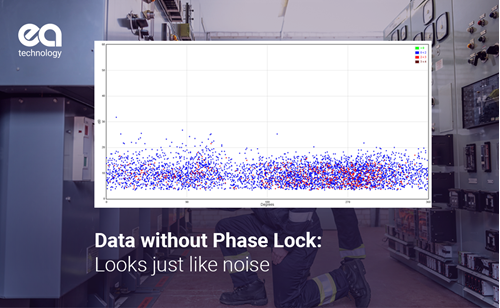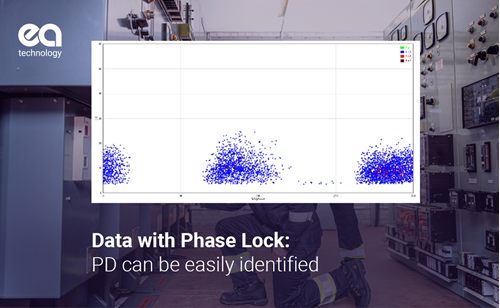Partial Discharge FAQ : The Importance of Phase Locking
-
17 March 2023
-
Brad Monaghan
In any electrical installation, system frequency will naturally fluctuate or "drift" from its intended setting of 50/60Hz throughout the day. These variations can impact the accuracy of partial discharge (PD) testing.
What is Phase Locking?
Phase locking is the process of synchronising the 50/60Hz reference of a PD test instrument with the actual system frequency at the time of recording PD data. Achieving a good phase lock is essential for accurate data collection. When the system frequency and the PD test instrument are in sync, tools like our UltraTEV Plus² can accurately record phase-resolved partial discharge (PRPD) patterns.
Why is Phase Locking Important in PD Testing?
Accurate PRPD patterns are crucial for correctly analysing PD activity. With a good phase lock, you can effectively diagnose various types of partial discharge, including internal voids, corona, surface PD, and more. Phase locking also helps in distinguishing between real PD activity and noise, reducing the chances of false positives during analysis.
However, for low-level, generalised PD activity, the precision offered by phase locking might not be necessary. In such cases, basic analysis might suffice without the need for phase locking.
Benefits of Phase Locking
Implementing phase locking in your PD testing regime offers several advantages:
- Enhanced Accuracy: Improves the ability to differentiate between PD and noise.
- Simplified Data Interpretation: Reduces the complexity of analysing PD data.
- Better PD Classification: Allows for more accurate classification of PD types, such as single-phase, multi-phase, and corona PD.
- Detection of Multiple Sources: Enables the identification of multiple PD sources within the system.


Enhance Your Phase Locking with Our Technology
EA Technology's newly launched Wireless Phase Reference accessory ensures you achieve an accurate phase lock in any environment, further enhancing the precision of your PD testing. Learn more here.
Have More Questions About Phase Locking and PD Testing?
Our engineers are available for one-on-one Q&A sessions, offering 15 minutes of expert advice. To book a session, simply send us your questions and preferred time via this form.


